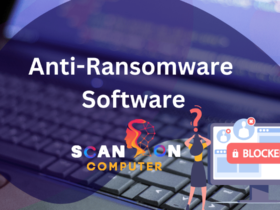Rootkits are one of the more difficult types of malware to identify and eliminate, with hackers often installing it by sending you malicious emails, distributing PDF files containing malicious software or accessing risky websites.
Rootkits can hide files, modules, processes and registries on a system – some notable examples being Stuxnet, Machiavelli, Zeus and Sony BMG copy protection rootkit.
What Is a Rootkit?
Rootkits are a type of malware that allow attackers to gain remote access to computers and devices, usually in combination with viruses, backdoors, worms or Trojan horses. Furthermore, these rootkits often include tools allowing hackers to steal sensitive information or disable antivirus software and launch distributed denial-of-service (DDoS) attacks.
Rootkits are designed to infiltrate devices by hiding in the background and monitoring applications, stealing passwords and files, changing system settings or altering other system configurations without alerting system administrators. Once inside, rootkits may install additional malware such as keyloggers, screen scrapers or bots for DDoS attacks onto victim machines – with some capable of disabling antivirus and endpoint security systems altogether.
Attackers have several methods available to them to reduce antivirus and antirootkit software’s ability to detect them: they can embed a rootkit in an OS kernel or storage device boot sectors; embedding one within Intel management engine coprocessor firmware can make detection nearly impossible, so new antivirus and antirootkit software has been designed specifically to detect it by parsing hardware calls and data that identifies active rootkits.
Rootkit definition and meaning
Rootkits give cybercriminals access to any device or network. Rootkits typically conceal malware programs like keyloggers, adware or screen scrapers which capture personal information for sale to third parties or can monetize it further for profit.
Rootkits typically reside deep within the kernel or operating system modules, making it hard for antivirus and anti-rootkit software to detect them. Bootloader rootkits attach themselves to Master Boot Record (MBR)/Volume Boot Record (VBR), meaning they run before operating system boots up; kernel-mode rootkits work similarly but are harder to detect.
Other types of rootkits can be installed through phishing attacks, malicious links in emails or untrustworthy third-party websites. To defend against rootkits effectively, operating systems, applications and antivirus software must remain up-to-date; additional precaution should be taken when downloading programs – don’t click suspicious or unfamiliar links when installing programs or opening attachments from unknown senders and use only secure Wi-Fi networks when possible. Should these precautions fail in protecting you against rootkit attacks, backing up data and cleaning up system software may be necessary.
Types of rootkits
Rootkit malware provides threat actors access and control over any system they target, from keyloggers and screen scrapers to spyware that steal personal information such as user login details for cybercriminals to use against victims’ passwords and usernames. Some types also disable antivirus solutions while creating backdoors that eavesdrop on online activities of victims.
Kernel mode rootkits target specific system-level components within your operating system and embed code inside them, adding, deleting or editing operating system code without detection – making removal difficult or impossible in many cases. They may even replace your bootloader program with one hacked by hackers to intercept data written to hard drives.
Firmware or hardware rootkits infiltrate computers by attaching themselves to hard drives, routers or BIOSs (bionic input/output systems installed on small memory chips on motherboards), often remaining undetected for years and enabling hackers to log keystrokes and track online activities without being detected by users. Also referred to as bootkits, these rootkits typically load as soon as you turn on your computer and can be very difficult to remove once infected software loads upon boot-up and can often remain undetected for extended periods.
How to detect rootkits?
Rootkits can conceal malware designed to steal passwords and credit card numbers, delete files from a computer remotely or even execute code remotely – not only this, they may disable anti-malware software altogether and allow cybercriminals to take control of computers for use as botnets.
Rootkits are one of the hardest forms of malware to identify and remove due to their ability to remain hidden for months at a time. Therefore, prevention is key. In order to guard against rootkits effectively, companies should invest in penetration testing and automated code review practices which will identify vulnerabilities which attackers could exploit before going live with production settings.
Kern mode rootkits are among the most dangerous forms of malware because they breach operating systems from within, giving an attacker access to every security feature and system on your computer. They use hooks into core parts of an operating system’s code in order to evade detection tools like antivirus software; to avoid being victim of one yourself, invest in secure hardware, apply policies that follow least privilege, and implement next-generation anti-malware software solutions as a defense mechanism.
How to get rid of rootkit?
Rootkits are one of the more difficult forms of malware to detect and remove due to their ability to remain hidden, giving attackers full access to victim machines. Sometimes it takes months until someone notices unexplained performance or security settings issues with their device, before any detectable changes become evident.
Rootkits need to be protected against by using an effective, cutting-edge antivirus program, but good online security habits, like avoiding phishing attacks and only downloading software from reliable sources are equally essential.
Boot-time scans like those included with Avast One can help detect and eradicate certain rootkits quickly and efficiently, since it runs during your computer’s startup procedure and catches them while they are still dormant. In extreme cases, though, you may require backup files as well as performing a clean install of OS to completely get rid of a rootkit.
Once detected, rootkits can be difficult to eliminate as they often remain hidden from antivirus programs and Windows itself. Watch out for any recurring issues which don’t seem plausible such as sudden decrease in performance or unexplained changes to Window settings that don’t seem reasonable.
How to prevent rootkits?
Follow safe computing practices and you should be able to thwart rootkit attacks on your computer. Do not download software from untrustworthy sources, open attachments from unknown emails without verification and update antivirus software regularly to reduce the chances of infiltrate rootkits entering.
Cybercriminals develop and distribute rootkits through various means. Some are concealed within seemingly trustworthy programs – for instance Sony BMG released its rootkit along with Extended Copy Protection software in order to stop users making copies of its CDs.
Rootkits that are more advanced are often capable of bypassing antivirus and security measures and therefore becoming much harder to eliminate once they have compromised a computer.
Rootkits can be used to steal sensitive information, such as banking details and credit card numbers from computers and networks. Other rootkits may be employed for DDoS attacks or spam email delivery. Finally, certain rootkits enable hackers to execute other files on an infected device; such as keyloggers that record keyboard strokes without your knowledge or adware that displays unwanted advertisements on your screen.
What Can a Rootkit Do?
Rootkits allow malicious actors to conceal malware on a victim machine and steal something valuable from it. Rootkits have become the go-to tools in cyberattacks because of their versatility; they can disable antivirus software, change system settings, spy on activities taking place nearby and steal sensitive information like login credentials or financial details from vulnerable targets.
Some rootkits are so discreet that they can evade detection by antimalware software or virus scanners, making prevention essential. User education must include rules against clicking suspicious links or downloading files from unknown sources to minimize phishing attacks, while companies must implement an advanced antivirus solution capable of detecting rootkit installations as well as an environment to test software vulnerabilities before it goes live in production.
Firmware rootkits target hardware components like the Intel Management Engine coprocessor or your network card and can often be found hidden within its firmware. Firmware rootkits can be particularly dangerous because they’re hard to detect and often remain active even after factory reset, while user mode rootkits hide themselves within applications to gain entry to the operating system – typically making them slightly easier to spot than kernel mode ones.













Leave a Reply
View Comments